Today we flew from Ziguinchor to Dakar and then hired a car to drive us to Thiès (pronounced “chess”; Wolof: Cès).
Georgraphy lesson, then photo lesson, hang with me….
Thiès is the third largest city in Senegal with a population over 320,000. It lies 60 km east of Dakar. Before colonization, the Thiès Plateau was a wooded frontier between the kingdoms of Cayor and Baol inhabited by the None, an ethnic sub-group of the Sereer. The Sereer None still inhabit the Thiès-None neighborhood of the south-west city today.
After arriving Thies, we set out to a nearby village to observe a Saving for Change group meeting which was to take place under the big tree across the road from the market.
OK, now the photography lesson….I’m going to talk photography today, since many of you folks following the blog are either already shooting for NGOs or have indicated an interest in doing so.
Wait, first let me digress….
It’s 11:30 pm, it’s been a long day…shooting for NGOs usually means long days. We got back to the hotel tonight at around 9:00 pm, grabbed a bite to eat (mutton) and then Brent and I sat here and edited, blogged, uploaded, wrote captions, did research and caught up on email. Mind you, I am not complaining..I love my job, it’s the best job in the world, but it’s not always easy.
Anyway, I’m writing this tonight so that I can post it tomorrow..no use changing my blog post in the middle of your day..so, I am going to let yesterdays stay up and in the morning I will post again. But sometimes it’s all about preparation.
So, today, like I said, I’ll give some random thoughts and insights and tips about what I shot…
Collaboration and communication are a big part of how NGOs work with partners and those who they’re trying to help..so, how does one show that in a frame? Well, showing people working together, peraps talking or brainstorming is a good start. Showing two women walking to the group meeting was one way to capture the feeling.
Technical note, shoot plenty of shots of people walking in order to get good foot position in your image…there is nothing worse than a static “flat footed” shot of people walking, it will kill the shot.
Candid moments. I’m always looking for opportunities to grab shots that might be useful…not necessarily what’s happening “on the main stage” but stuff around the edges. Watch for complimentary colors like the orange dress and orange wall, it makes for nice subtle images that are less “busy” and look nicer in Annual Reports and such.
Thoughtful expressions, usually shot through the crowd, in this case over a shoulder are quite useful to my NGO clients when they need to convey a feeling of “thought”.
Eye contact: today as opposed to yesterday…today I was looking for more eye contact. You need to deliver both styles to a client. Last night after looking at yesterday’s images, I felt like I was a little light on eye contact, so I hit it hard today, and I love shooting eyes.
Position is so important! You can’t just stand there and shoot, you gotta move around…a position from above eyes on me has nice impact (think of yourself as viewing the final image in a brochure or report ….the NGO who will use the image, perhaps as one where the person receiving the aid is looking directly at the donor) with an expression of pride, hope and satisfaction. Showing extended family in background to emphasize the impact and responsibility of the bread winner.
A sense of pride in having one’s own business. This is what I call a standard environmental portrait..in this case, a woman in here shop. I didn’t stop there. I went into her shop and photographed her interacting with a client (seller’s perspective). It really pays to “expore” the subject. I probably spent 10 minutes but could have stayed even longer but we had other work to do.
Kids always follow me around..so I try to entertain the children in-between shots with a few pictures……actually what I am doing is gathering useful fun shots for splash pages in Annual Reports, etc..it’s a win-win. Don’f forget to give the NGO some negative space around the subject to drop in some text or their logo.
NGO can always find a use for smiling faces of all ages and genders…for this shot of of teen age girls, I looked for a simple background color and without saying anything, I motioned that I would like their photo…they instinctively put their heads together and began giggling…don’t stop shooting, you want to capure a range of emotion..just after this shot the girl on the right shyly covered her mouth..it’s a nice shoot too, which the NGO might also use.
After the girls did it, the adolescent boys knew just what to do…same background…same shot, different kids.
I’m looking through the lens on this one, trying for the right moment when the children’s hands are not in front of their faces, while also looking for some extra “eye candy” in the background …it took 4 shots to get the child in the back, right corner framed in the crook of the arm of the boy in the foreground, but it’s worth working for. The same shot with the background boy’s face partially obscured just doesn’t cut it.
This shot is another that I shoot quite often (similar to the USAID FrontLines Winner from a few months ago). I grabbed my 17-35 wide lens, held it up above the children and shot. Fast shutter speed (250th or faster) ,Auto focus really helps. Tip: shoot a lot, the kids are always moving
An overall, iPhone Pano shot of the scene of the meeting as it occurred in the village. I shot another series with my Nikon D3S but at this hour, I don’t have the desire or energy to stitch them together.
One last item: If you’ve made it this far you may be asking, “why no “Fly in the eye” shots”? Many people assume I shoot a lot of sad looking, poverty images of children in difficult living conditions. Although I see quite a bit of that, the photo needs of an NGO are quite different. Brent Farrar, Manager, Creative Services for Freedom From Hunger says. “we understand that poverty and suffering are realities, but that’s not where we want the focus to be in terms of our communications…the fly in the eye, speaks to a reality but it’s definitely not our messaging, we want to show hope, diginity, and empowerment.”
Thanks, I know I’ve been rambling and free thinking….I suppose if I had more time, I could have made it a bit more focused and concise…but I gotta’ get some sleep.
Good night.


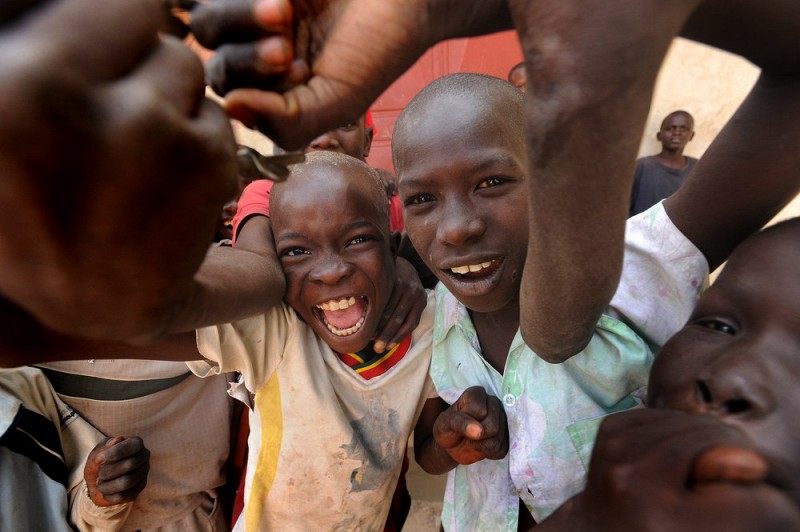
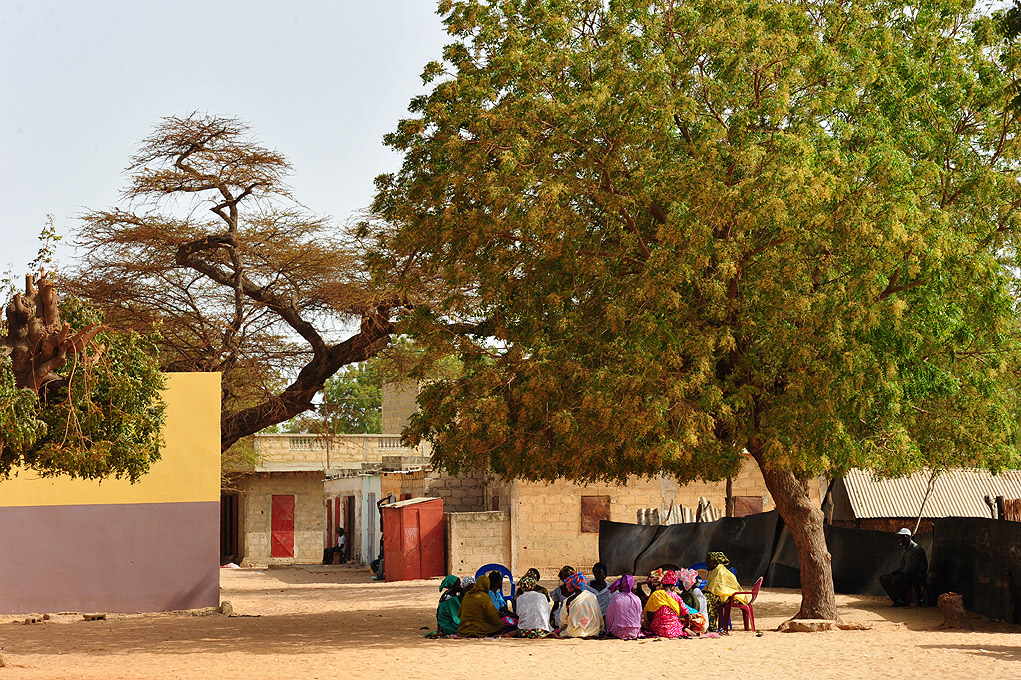
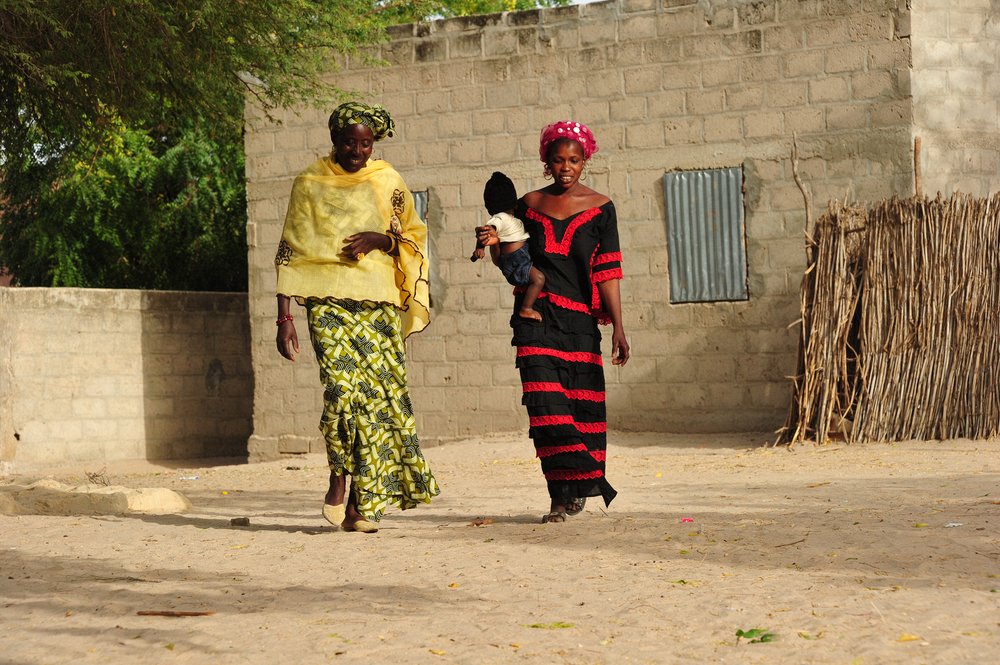
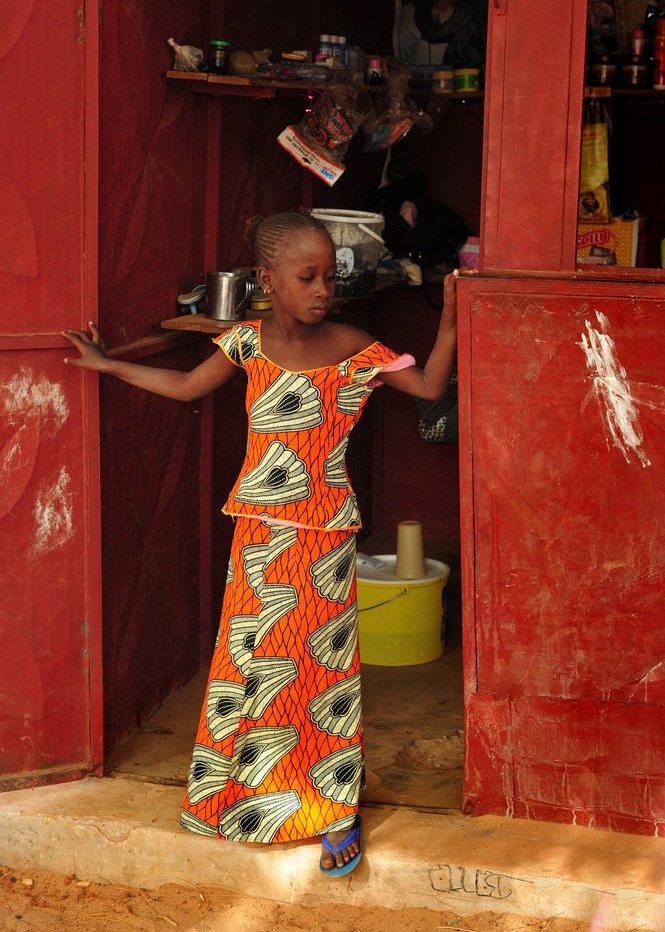

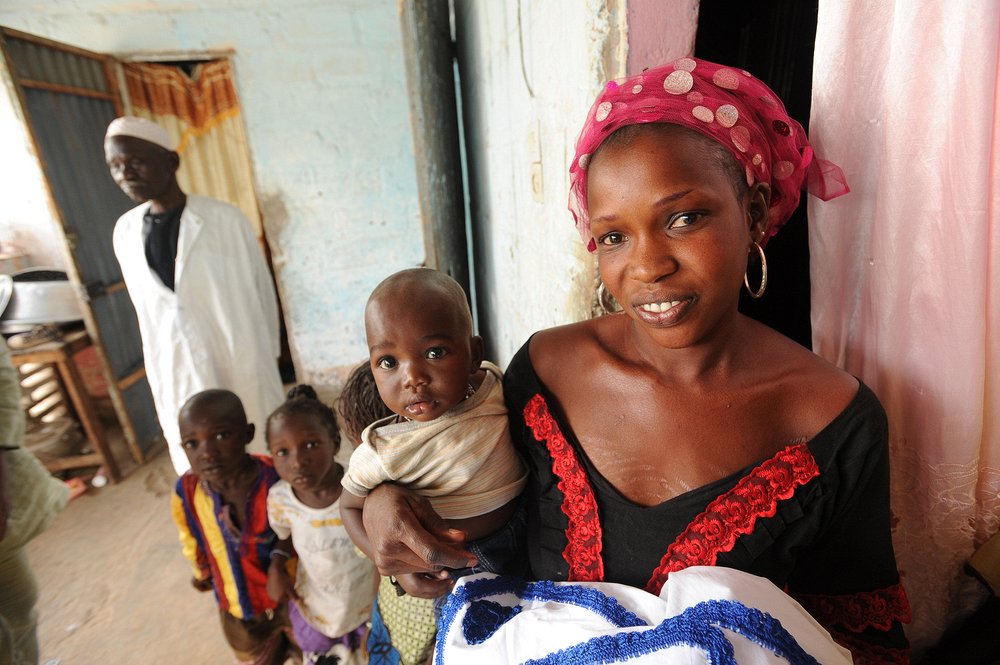
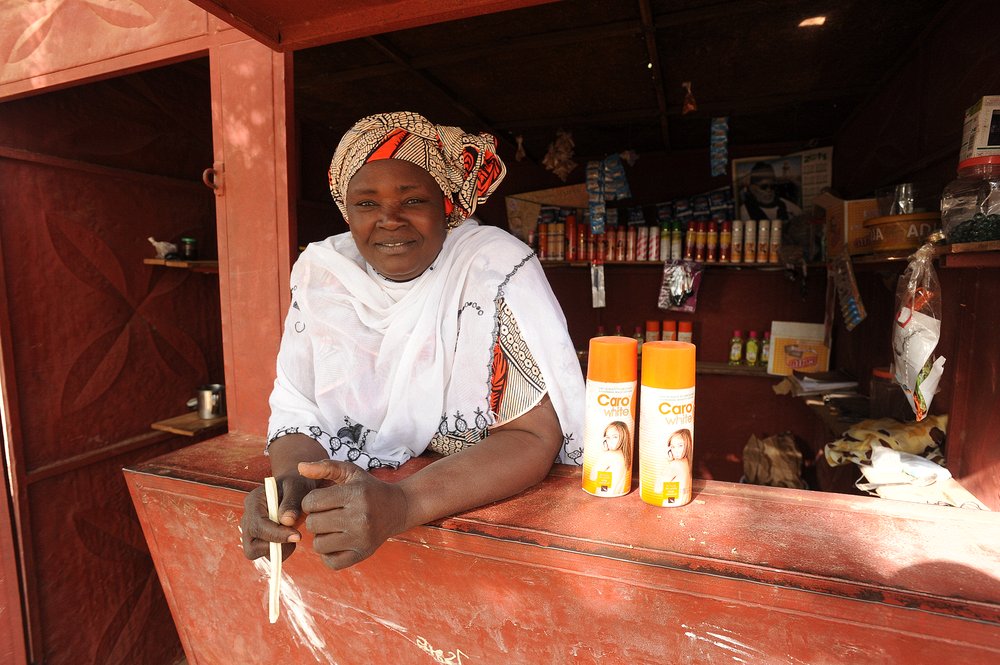

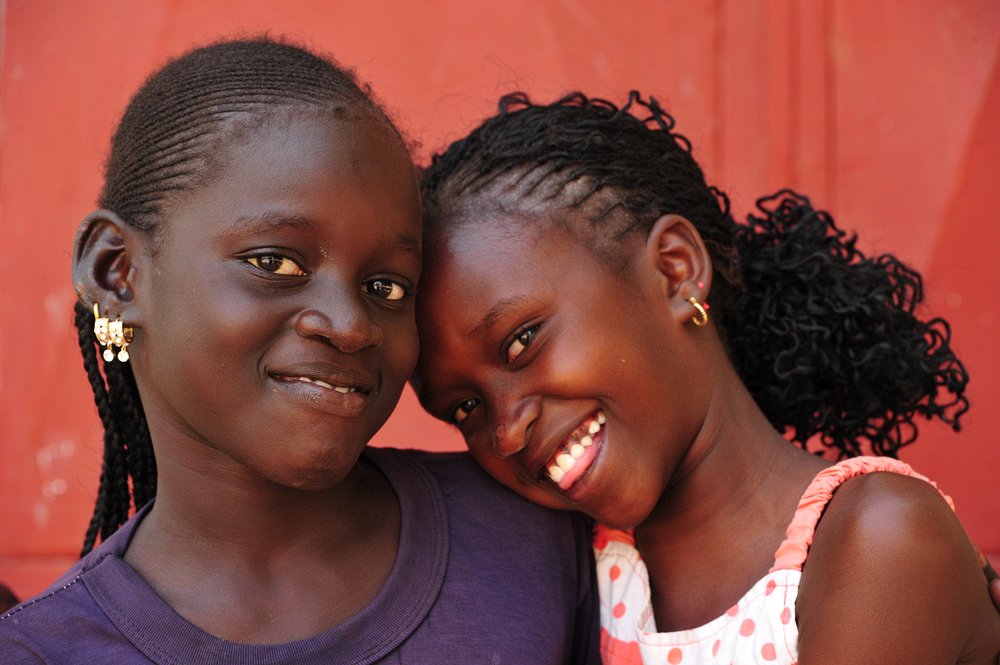
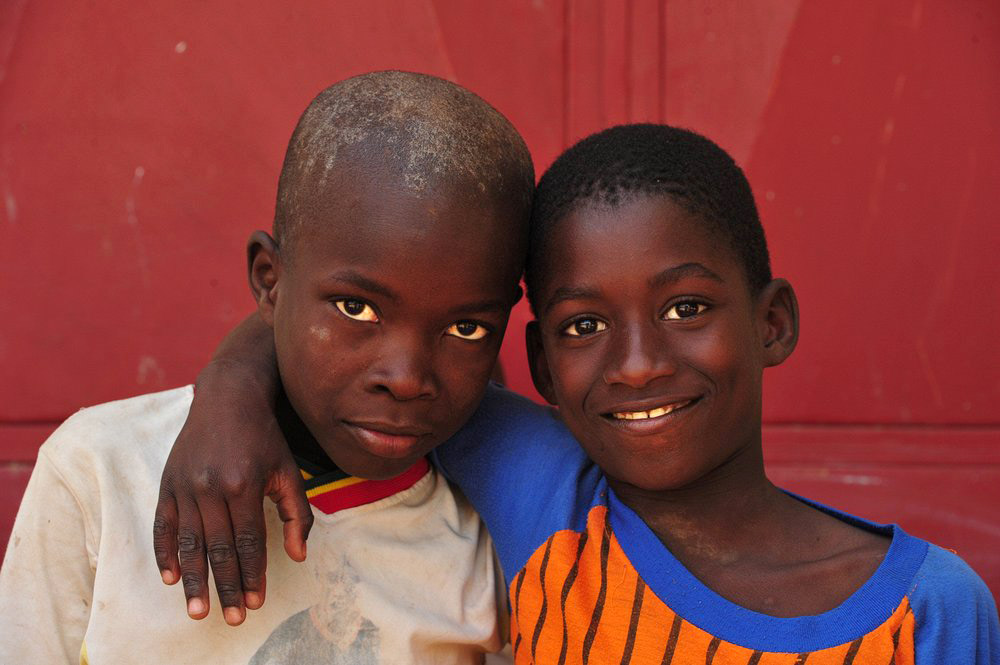

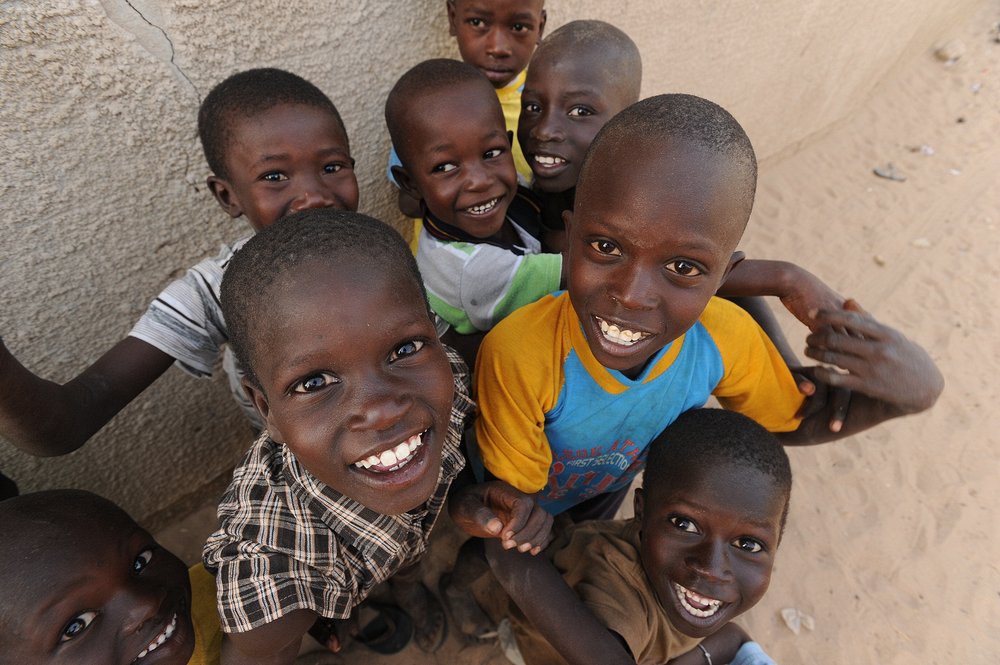







Hey Karl,
The amount of very informative/valuable information that you covered in such a relatively short time is awesome! Very insightful tips we can all learn from!
One thing I would say to anyone interested in doing what you do (and I am sure you have covered this) is that it’s more about connecting with your subject on a basic “human to human” level, you know, truly making them feel that you are no better or more important than they are, than the type of camera/lens in use. I know for a fact that I could give you my very old Zeiss film camera and you would come back with incredible photos that would tell a great story.
Your personality and your ability to truly connect with people from all walks of life is what makes you so successful. Having the best camera gear is, of course, a necessity, just like a master mechanic has the best tools. In short, it’s not the tool, but the man/woman holding them. Looking at your images there is no doubt that you are a fantastic photographer.
Personality + skill + compassion = success!!!
Great Work my friend!
Terry
Amazing photos. Uplifting and sensitive, and I love the photo tips.
And there’s “always something wide, and always something long to shoot.
Success!!!
The images are amazing, the lessons are great!!! I am enjoying every line you write.
Thanks my friend and keep up the great work.
Karl —
Just looked at your new posting from Theis; I loved the colorful shots from the Casamancetyous. Also, your commentary about the projects there and about the types of shots you are looking for. I will be in Theis on May 19, or, at least, I will be stopping briefly there on my way to St. Louis to the north. Then after a couple of days, I will be going up the Senegal River by van to a little town called Podor to photograph the small towns and villages of the Wolof, along it; then I will be coming back down the river by boat. Coming down, I will be stopping at places on both sides of the river and photographing not only the Maure villages on the Mauritanian side but also the Woloff villages on the Senegalese side. I will be posting from Senegal while I am there and then after I return at my site on Smugmug: http://lookclose.smugmug.com/SenegalNew.
Jim
Hope you got some sleep after that long day. Thanks for sharing the information Karl. I love the image of the kids with their hands framing the shot. Happy travels and take care.
Carl
Hi Karl,
As always your images are so powerful. Really impressed with the attention to detail and the kid in the background between the hands. I look forward to catching up in Cambodia
Cheers
Andrew
Hi Karl, it’s always so refreshing and inspiring to see your material and read your notes. I like and value the authenticity of them. As an international development practitioner I am also happy and proud to know of the principles that you apply in your work. Your photos dignify human life and empower the viewer. I can’t wait to spend time with you shooting again!
Hi Karl
“Brent Farrar, Manager, Creative Services for Freedom From Hunger says. “we understand that poverty and suffering are realities, but that’s not where we want the focus to be in terms of our communications…the fly in the eye, speaks to a reality but it’s definitely not our messaging, we want to show hope, diginity, and empowerment.”
Exactly. It is the difference between a handout and a hand up.
The hand up attitude is about optimism and the future and that is what you portray so well.
Cheers
tim
Karl —
I just got back from Senegal, specifically Dakar, yesterday at 6:00pm to LAX; today, I am looking at your images again and comparing them with mine. I went through Theis twice, once on the way to and once on the way back from St. Louis. But I did not go to Zinguinchor. I like your images, both the ones up close of kids and the ones of groups of people from a distance. I shot with three cameras: my Canon 1ds Mark II, my Bronica 645 Rangefinder, and my Pentax 645. The latter two are film cameras. Keep up the good work.
— Jim House
.
.
Hi Jim, thanks for the comment here. Hope you had a nice trip to Senegal and that you got some great pictures….I am anxious to see them. I’m leaving for the Philippines soon…there is still one space available, in case you are able to come.
Cheers, Karl